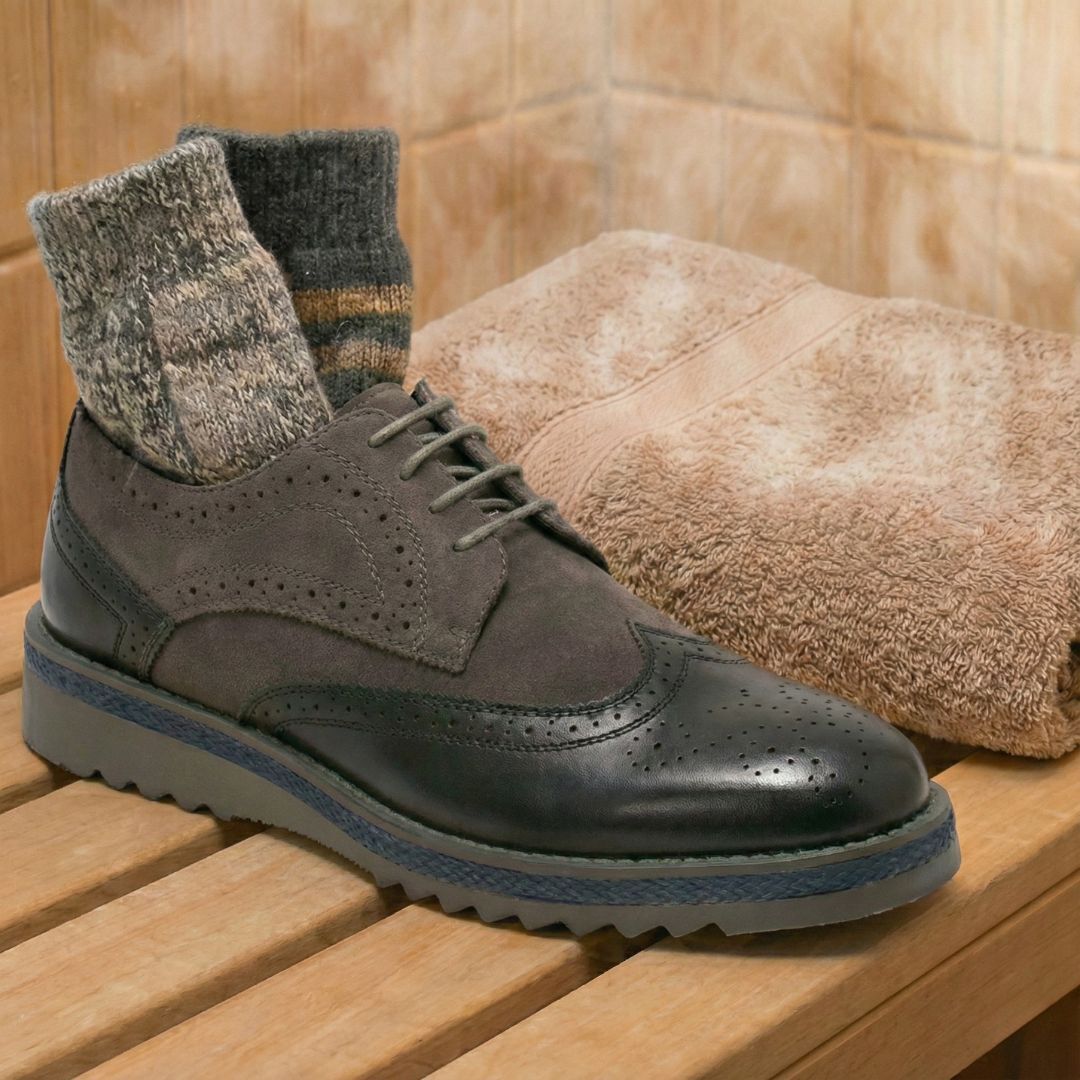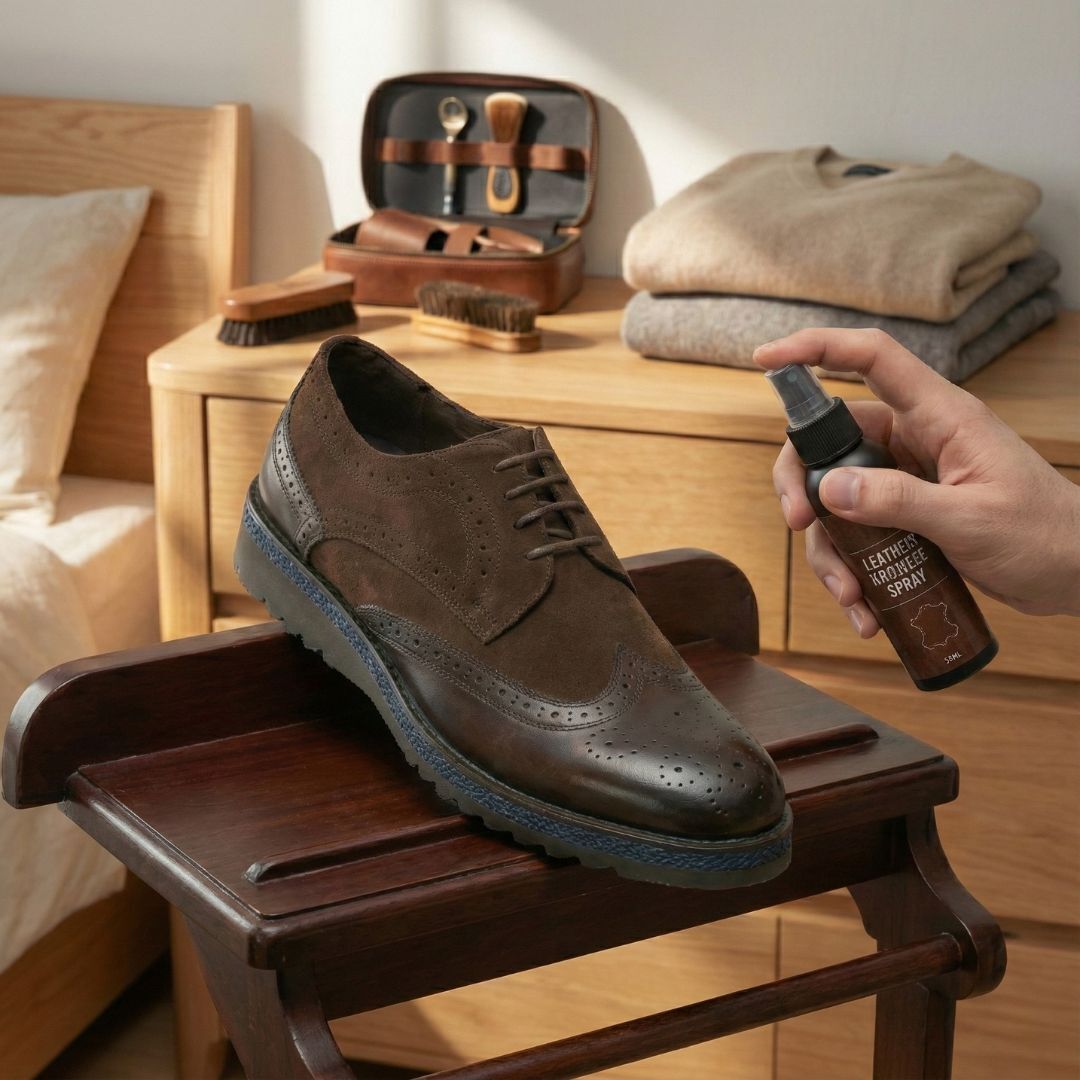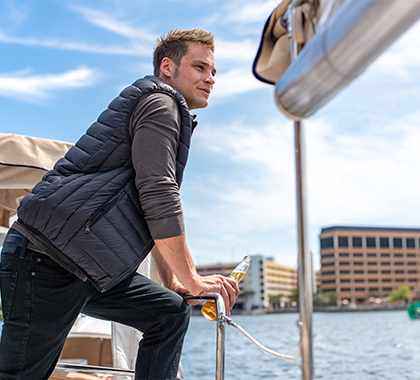How to Stretch Leather Shoes Without Damaging Them
2025-11-26
Leather has a way of holding its ground before it softens. It doesn’t instantly follow the shape of your foot the way fabric sneakers do. I’ve seen people return perfectly good shoes simply because they didn’t realize leather needs a little warming up and gentle coaxing before it feels right. The good part is that leather can stretch. The not-so-great part is that doing it incorrectly can leave marks or even change the shape in a way you didn’t intend. Stretching leather is almost its own skill, but it’s not complicated once you know what to avoid and how far you can safely go.

Why Leather Shoes Feel Tight at First
Most people don’t think about the nature of leather when buying shoes. They look at the size, maybe try them on once under store lighting, and assume the fit is final. But leather is firm at the beginning because it hasn’t absorbed your body warmth, pressure, or motion yet. Unlike mesh or foam, which adapt instantly, leather prefers to take its time.
Natural Stiffness and When Tightness Becomes a Problem
There’s a type of stiffness that’s harmless, the kind you feel with new leather shoes or freshly purchased leather sneakers. They hug the sides of your feet, but they’re not painful. After a few short wear sessions, that tightness softens. The other type of tightness is more concerning: sharp pressure on the toe box, your toes bending to “fit”, tingling after only a few minutes.
Those are signs that stretching is necessary before you can wear the shoes comfortably outside your home. A lot of people who are used to cleaning sneakers forget that leather behaves differently from the soft materials in athletic shoes.
How to Stretch Leather Shoes at Home (Without Ruining Them)
Home stretching is completely possible if you use a light hand. You don’t need intense heat, complicated tricks, or anything you’d be afraid to try twice.
Shoe Stretchers and the Freezer Method
Shoe stretchers have been around forever because they work. You can slide one inside the shoe, set how much pressure you want, and leave it overnight. It doesn’t force the leather to move, it encourages it. This slow expansion is ideal when you’re trying to enlarge leather shoes in a controlled way.
There’s also the freezer method, which sounds odd until you try it. Put the shoes in a sealed bag so they stay dry. Then place smaller bags of water inside the shoes and leave them in the freezer. As the water expands, it gently pushes the leather outward. I’ve known people who used this trick on older pairs they didn’t mind experimenting with, and the results were surprisingly good.
Socks + Heat and Manual Flexing

The simplest method is wearing thick socks and walking around your home. Add a bit of gentle heat from a hairdryer, low setting only and the leather responds faster. Bend your feet, roll your weight from heel to toe, and you’ll feel the shoes slowly loosen.
This approach works particularly well for structured styles, the kind people often choose when transitioning from wearing sneakers to work to something more polished.
The “Wear Them Indoors First” Method
It sounds too easy, but many leather shoes only need short, repeated sessions at home. Wear them for 15–20 minutes, take them off, let the leather cool, then repeat later. That break-in cycle is how most high-quality shoes naturally adjust to your feet.
Soft materials like those in workout shoes mold instantly, but leather likes this slower approach.
How to Stretch Leather Boots Properly
Boots require slightly different care because they have more layers, thicker structure, and sometimes reinforcement that doesn’t stretch easily.
Steam Method and Professional Boot Stretching
Short bursts of steam can loosen the leather, but the key is restraint. Hold the boot over light steam for a few seconds, just enough to warm the material. Then put on thick socks and wear the boots until the leather cools.
For nicer pairs of dressy leather boots, women’s moto styles like these vegan leather boots, or delicate Chelsea boots, a cobbler is worth the trip. They can stretch very specific areas without distorting the rest of the boot.
Conditioning Before and After Stretching
Dry leather cracks when stretched. You don’t see it right away, but the damage shows up later as lines along the sides. Using a leather conditioner first makes the material more flexible. Conditioning afterward helps lock the shape in place.
 How to Stretch Shoes Immediately (For Urgent Situations)
How to Stretch Shoes Immediately (For Urgent Situations)
Some people need their shoes comfortable the same day they bought them at weddings, events, work shifts, interviews. In those cases, you can speed things up.
Heat + Stretch Sprays
Stretch sprays soften leather quickly. Spray inside or on the tight spots, put on thick socks, and walk around. The spray helps the leather respond almost instantly.
Warm towels can also help. Wrap the shoe for a few minutes, remove the towel, and wear the shoes while the leather is still warm. It won’t create a huge change, but it’s enough when time is tight.
When Stretching Isn’t a Good Idea
Some shoes look sturdy enough to handle stretching, but the material may say otherwise. Before trying any method, it helps to take a closer look at the leather itself. A quick inspection saves you from making the problem worse, especially if the pair is older or already shows signs of wear.
Delicate Leathers, Visible Damage, or Too-Small Sizes
Not every pair is a good candidate for stretching. Thin or delicate leather can lose its shape permanently. Shoes with loose stitching or cracks may get worse if stretched.
And the biggest mistake: trying to stretch a shoe that’s an entire size too small. Leather can widen slightly, but it cannot grow a full size. If the shoe is severely tight, return or exchange it instead of forcing the stretch.
How Long Does It Take to Break In Shoes?
The timeline varies. Soft leather can break in after just a few indoor sessions. Thick, structured leather may take a couple of weeks. Some people assume breaking in leather is like breaking in running shoes, but the materials work differently. Foam adjusts immediately. Leather responds only after gradual pressure.
If you rotate between short wear periods, light heat, and mild stretching, you’ll shorten the break-in period significantly.
When to Choose Professional Shoe Stretching
If the shoes are expensive or meaningful, a gift, a work essential, or a pair you want to last for years, letting a cobbler handle the stretching is a safer choice.
Cobbler tools apply even pressure across the exact area you need widened. This is especially helpful for structured leather shoes or boots with reinforced toes or heels.
Keeping Your Stretched Shoes in Good Shape
It’s easy to forget that stretched leather needs a little support to stay that way. The material settles into its new shape over the next few days, so this is the time to give the shoes some structure and care. A few small steps right after stretching make a bigger difference than most people expect.
Shape Holders, Conditioning, Storage
Once your shoes feel good, keeping in shape is important. A wooden shoe tree prevents the leather from shrinking back and absorbs moisture from wear. Light conditioning every few weeks keeps the material flexible.
And always give leather space in your closet. Tight, stacked storage can undo the stretching.
If you already follow habits like cleaning sneakers, you’ll find leather maintenance just as simple, just more moisturizing and less scrubbing.
Final Words
Stretching leather shoes isn’t complicated. It just requires patience and the right touch. Leather responds well when you warm it, move it, and let it rest. Whether you’re dealing with stiff boots, narrow dress shoes, or a pair that feels tight only in one spot, gentle methods can make a big difference. And when home methods aren’t enough, a cobbler can take over and do it safely.
With a bit of care, your leather shoes will soften, widen where needed, and eventually feel like they were made just for you.

Mariam Simmons
Mariam Simmons is a fashion enthusiast and Content Manager at Alpine Swiss. She loves traveling to the world’s top stylish destinations and gets inspired to create helpful fashion and lifestyle guides. With over a decade of writing experience, her main goal in creating content is to ensure readers learn something useful and provide value instead of noise.

